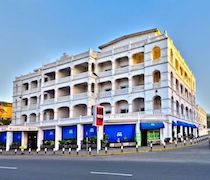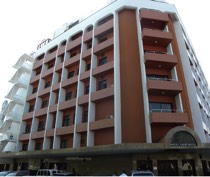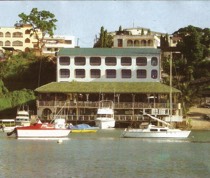Mombasa
Wandering the streets of Mombasa I sense history billow around me. It's in the smells of the spices, the scratches in the walls - and the curious characters who talk to me! Mombasa, now a bustling port, evokes the past perhaps more than anywhere in Kenya.
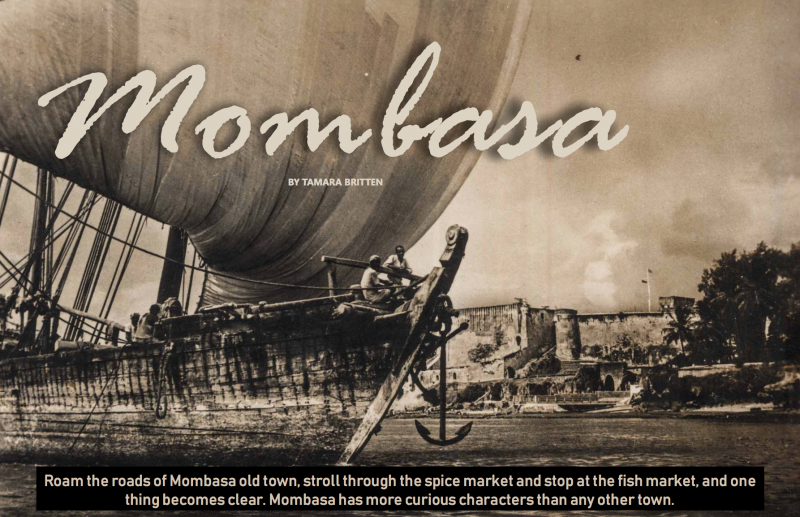
A fisherman, expertly de-scaling a snapper in the middle of Mombasa’s frenetic fish market, said: Let me tell you of a recipe I learned from my grandmother. Take garam masala, chilli, ginger and black pepper. Squeeze a lemon onto the powder and compress it into a paste. Then score the skin of the fish and press the spices into the fish. You can fry or grill the fish, or serve it with a coconut sauce, as you wish. The flavour will permeate the fish, however you cook it.
Mohammed, vendor of spices at Mombasa’s fragrant spice market, placed nutmeg in my hand and said: We call this kungu manga. It’s Kenyan Viagra and we’ve used it for generations. Crush it into powder and slip it into your husband’s black coffee.
Hassanali, who studied archaeology at Glasgow University, specialising in Biblical excavations, returned to his home in Mombasa and took over the tearoom that had been established in 1868 by his grandfather. He held out gnarled hands that had held ancient pottery and spicy confectionery alike, gave me a Labanir, and said: The secret to crafting sweets is knowing which kind of sugar to use, and judging the density of the brew. Dip your thumb and finger into the mixture. Press them together, then part them: strings of liquid sugar will form. If two strings form, it’s thick enough for a certain kind of sweet. If three form, it’s dense enough for another.
In all these characters, history is alive, just as it is in Mombasa. History lives not only in the fort that towers over the seafront, but in every cobble of the roads, every overhanging window, and every person who lives here.
Stories of Mombasa weave history and myth, creating a fabric that’s colourful and evocative – and has threads of truth woven through it. Roman and Egyptian tales mention an island on the East Africa coast that might be Mombasa, from around 2,500 years ago; the island is mentioned in written documents from around 2,000 years ago. Stories of iron mines, tiger hunts, crimson dogs and thieving monkeys are just a few of the tales from this time. Eccentric characters populate these stories. Mwana Mkisi, a pagan yet holy queen with links to central Africa, was the first of the line of the Tehnashara Taifa, or Twelve Nations, keepers of local Swahili traditions. Shehe Mvita, early believer in Islam, established the first permanent stone mosque. Later, Ibn Battuta, Marco Polo and Zhang He all visited Mombasa.
The island was a port on the original trade routes, and dhows docked here from the early days. Arabian pottery, Gujarati sweets, Yemeni spices and Persian fabrics all left their mark and are an integral part of the life and culture here today. Gold, ivory, tortoise shell, rhino horn and huge numbers of slaves were sold from here to pay for these imported luxuries.
The riches of the region, however, attracted unwanted attention; the repercussions of this gave the island a new nickname: Island of War. In 1498, Vasco da Gama arrived, heralding a period of aggression and hostility. In 1505, Portuguese armed with firearms took on the locals who had only spears, arrows and stones; 1,513 Mombasa folk died and only five Portuguese. The victorious Portuguese not only looted the town, but burnt much of it down. Catastrophe followed catastrophe, and ambushes, battles and plunder became the norm. At the end of that century the Portuguese built Fort Jesus – now a museum – which still stands sentry over the town. The fort became the focus of all clashes, and changed hands nine times over the next 200 years. In one of the most brutal episodes of the time, the Omanis laid siege to the town for over two years, until almost all the Portuguese inside had starved or died of plague.
The island then ricocheted between the Omanis, Portuguese and British, many of whom intermarried with the locals. Already a fusion of African coastal peoples and all the countries of the trade routes, this potpourri of people became the Swahili, with their own language and culture, who produced the myriad of characters who inhabit Mombasa today.
Tamara Britten, 10 August 2019
Published also in: Coastal Footprints
About the region
Mombasa
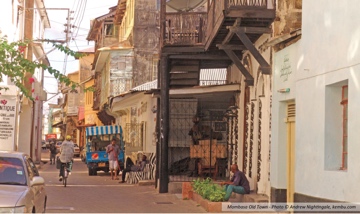
Mombasa has a colourful history stretching back a thousand years. Invasions, sieges and trade have all made their mark on the culture of this coastal island city. East Africa’s largest port, Mombasa is the gateway to all the landlocked countries of central Africa, and is the second largest city in Kenya.
Read more about MombasaWhere to stay
The newly refurbished Castle Royal Hotel is situated in Mombasa town centre, only 10 minutes from the historic site of Mombasa Old Town and the world famous Fort Jesus. The island of Mombasa is known in Swahili as Kisiwa ya Mvita, which means Island of War, ...
Royal Court Hotel, located in the centre of Mombasa, is well equipped for both business and holiday visitors. The impressive 8-floor building combines coastal wood with terracotta finishing. There are 92 en-suite rooms, made up of 59 standard, 29 executive, 2 junior suites and 2 executive suites. All rooms have ...
Situated on the creek amongst mangroves, Tudor Water Sports is part of a marina. The complex has a restaurant overlooking the water and offers a wide selection of water sports and boat trips. There are 18 en-suite rooms, made up of doubles and singles, and 2 family ...
